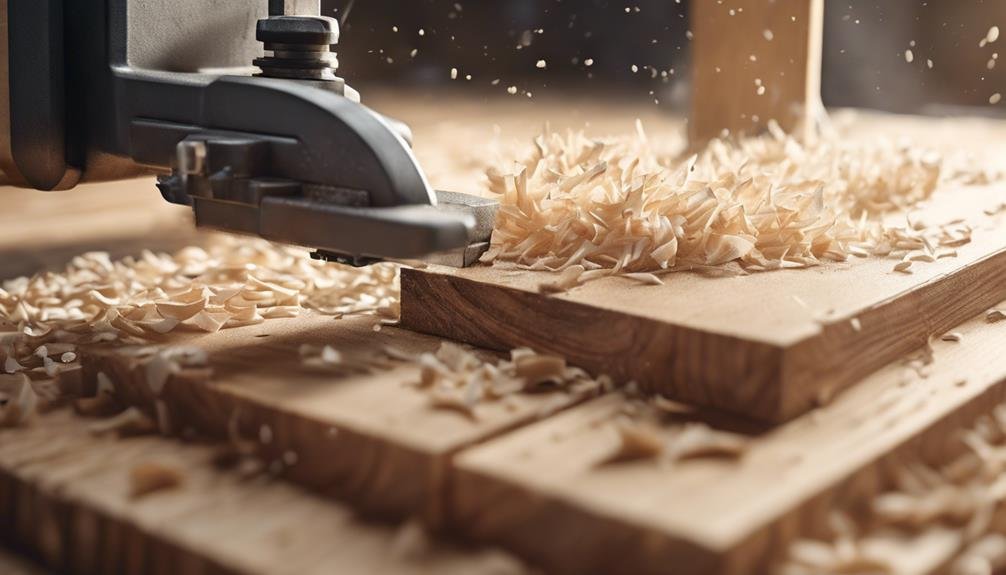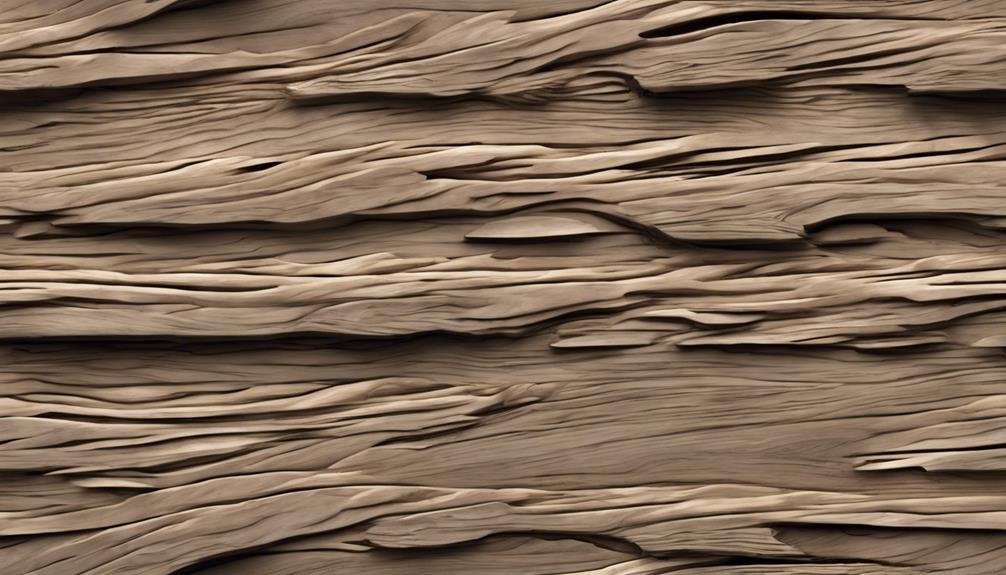When printing with wood PLA filament, you're likely to encounter stringing issues due to the filament's higher viscosity, lower melting point, and the friction caused by wood fibers, which can lead to excess material oozing and unsightly strings. To combat this, adjust your retraction settings, considering speeds, distances, and temperatures. Using a smaller nozzle size can also reduce stringing. Additionally, optimize your print temperature, as lower temperatures decrease filament viscosity and improve control. By fine-tuning these settings, you can achieve smooth, string-free prints. Dive deeper into the intricacies of wood PLA printing to uncover more expert tips and techniques.
Understanding Wood Filament Stringing
When you print with wood filament, you're likely to encounter stringing, a frustrating issue that arises from the unique properties of this material. Wood filament's higher viscosity and lower melting point make it more prone to stringing, which can lead to a messy print bed, wasted material, and time-consuming post-processing.
The presence of wood fibers in the filament can increase friction, causing the extruder to ooze out excess material, resulting in unsightly strings.
To combat stringing, adjusting your retraction settings is crucial. Retraction helps to reduce oozing by pulling the filament back into the extruder, preventing it from dripping out during travel moves.
Experimenting with different retraction speeds, distances, and temperatures can help minimize stringing. Using a smaller nozzle size can also reduce stringing by decreasing the amount of material being extruded.
Optimizing Print Temperature
By adjusting your print temperature, you can further reduce stringing issues, as the unique properties of wood filament make it sensitive to temperature fluctuations.
Lowering the print temperature can decrease filament viscosity and improve control, resulting in less stringing. However, it's important to find the best temperature balance, as wood filament is prone to poor adhesion and under-extrusion at the wrong temperatures.
To determine the ideal temperature settings, printing a temperature tower test is recommended. This will help you identify the perfect temperature range for your specific wood filament brand and type.
Moreover, keeping the filament dry before printing is vital, as moisture can exacerbate stringing issues with wood PLA.
When optimizing your print temperature, consider factors such as layer height, as a lower layer height may require a slightly higher temperature to maintain optimal extrusion.
Retraction Settings for Success

To achieve ideal string-free prints with wood PLA filament, you'll need to fine-tune your retraction settings, as improper settings can lead to excessive stringing. When retraction settings are off, the extruder will continue to ooze out filament, creating unwanted strings between layer lines.
To avoid this, start by adjusting your retraction distance and speed. A good starting point is a retraction distance of around 3mm and a speed of 55 mm/s. However, you may need to experiment with different settings based on your specific printer and filament. Be cautious not to overdo it, as increasing retraction distance and speed too much can cause other issues.
Finding the most effective retraction settings for wood PLA may require some trial and error, but the payoff is worth it – clean, string-free prints with crisp layer lines. By fine-tuning your retraction settings, you'll be able to achieve professional-looking prints that showcase the unique texture and beauty of wood PLA filament.
Benefits of Larger Nozzles
Larger nozzles, starting from 0.5mm in diameter, become your best friend when tackling wood PLA prints, as they facilitate a smoother filament flow and reduce pressure. This is especially important when working with wood filaments, which can be notoriously tricky to print with. By using larger nozzles, you'll experience a significant reduction in clogging and stringing issues, allowing you to focus on producing high-quality prints.
Here are just a few benefits you can expect when you use larger nozzles:
- Reduced clogging risk: Wider openings in larger nozzles decrease friction, minimizing the risk of clogging during the printing process.
- Smoother filament flow: Larger nozzles facilitate a smoother flow of filament, reducing pressure and making it easier to achieve consistent results.
- Fewer stringing issues: By reducing pressure and friction, larger nozzles help prevent stringing issues that can ruin an otherwise perfect print.
Managing Moisture in Filament

You'll need to manage moisture in your wood filament, as it's well-known for absorbing moisture from the air, which can lead to print quality issues.
As a hygroscopic material, wood filament is prone to absorbing moisture from its environment, resulting in problems like bubbling, popping, and increased viscosity during printing.
To prevent these issues, it's important to store your wood filament in a dry, sealed container with desiccants to absorb excess moisture.
If you've exposed your filament to humid conditions, it's necessary to dry it before printing. You can use a food dehydrator or oven to remove moisture from the filament.
Effective drying methods are crucial for excellent print quality. Failing to manage moisture can lead to subpar prints, so take the necessary steps to make sure your wood filament is dry and ready for printing.
Adjusting Layer Height for Success
Adjusting your layer height is a crucial step in achieving the perfect balance between print quality, speed, and strength in your wood filament prints. You'll need to find the ideal point that suits your specific printing goals and preferences.
Here are some key considerations to keep in mind:
- Lower layer heights result in finer details but longer print times, while higher heights sacrifice detail for speed.
- The recommended layer height is typically suggested to be 50%-75% of the nozzle diameter for a balance of quality and speed.
- Experimenting with different layer heights allows for customization based on specific printing goals and preferences.
Minimizing Stringing With Speed

As you've optimized your layer height for a balance of quality and speed, it's time to tackle another key aspect of wood PLA printing: minimizing stringing, which can be greatly impacted by your print speed.
When printing with wood PLA, you'll find that slower print speeds can greatly reduce stringing. This is because lower speeds reduce pressure and allow for slower filament extrusion, giving the filament more time to retract and reducing the likelihood of strings forming. By adjusting your speed settings in your slicer software, you can greatly impact the overall stringing behavior during printing.
Higher speeds, on the other hand, can lead to increased stringing as the filament may not have enough time to retract properly. To minimize stringing, find the best balance between speed and retraction settings.
Slowing down the movement of the printer head allows the filament more time to retract, preventing stringing. By finding this balance, you'll be well on your way to reducing stringing issues with wood PLA.
Wood Filament Properties Explained
Wood filament, a unique composite material, combines PLA with wood fibers to create prints that boast a realistic wooden look and feel, accompanied by a sweet, PLA-derived aroma during printing. As you work with wood filament, you'll notice its distinct properties.
Here are a few key characteristics to keep in mind:
- Wood filament is less abrasive on nozzles compared to metal or carbon fiber filaments.
- It requires larger nozzles to prevent clogging due to the wood particles.
- The wood fibers can affect nozzle suction and extrusion control, leading to stringing issues.
When using wood filament, it's crucial to understand these properties to achieve excellent results. By recognizing the advantages and challenges of wood filament, you can adjust your printing settings and techniques to minimize stringing and produce high-quality prints.
With the right approach, wood filament can be a valuable asset to your 3D printing toolkit, offering a unique aesthetic and functional benefits.
Common Causes of Stringing

You'll commonly encounter stringing issues in wood PLA prints due to a combination of factors, including the wood fibers' impact on extrusion, high viscosity, and lower melting point of the material.
As you print, the wood fibers can clog the nozzle, causing the filament to ooze out and create strings. Also, the high viscosity of wood PLA makes it more prone to stringing, as it pulls the filament, creating a sticky, gooey mess. Moreover, the lower melting point of wood PLA can also contribute to stringing, making it more challenging to achieve a smooth, high-quality print.
Inadequate retraction settings can also lead to stringing issues in wood PLA prints. If the retraction is too slow or insufficient, the filament will continue to ooze out, creating strings and affecting the quality of the print.
Additionally, improper nozzle temperature or filament moisture content can exacerbate stringing in wood PLA. To achieve satisfactory results, addressing these common causes of stringing and making adjustments accordingly is crucial.
Expert Tips for Smooth Prints
To overcome the challenges of stringing and achieve smooth prints, try implementing these expert tips in your wood PLA printing process. When printing with wood, it's important to fine-tune your settings to minimize stringing and guarantee high-quality prints.
Here are some expert tips to get you started:
- Adjust your retraction settings to reduce stringing by pulling filament back during non-printing movements.
- Consider using a larger nozzle (0.5mm or larger) to allow smoother filament flow and minimize pressure.
- Increase your layer height to minimize stringing by reducing the number of layers and oozing.
Moreover, lowering your printing temperature slightly can make the filament less fluid, aiding in retraction and control. It's also vital to keep your wood filament dry before printing to prevent moisture absorption, which can lead to issues like stringing.
Frequently Asked Questions
How to Stop Wood PLA Stringing?
To stop stringing, you'll want to focus on moisture control by storing your filament in a sealed container with desiccants, ensuring it's dry and less prone to stringing issues during printing.
Does Wood PLA Need a Hardened Nozzle?
You don't necessarily need a hardened nozzle for wood PLA, but it's advisable to guarantee material durability, as the wood fibers can wear down a regular brass nozzle over time, affecting print quality.
What to Do if PLA Is Stringy?
If you're struggling with stringy PLA prints, you can reduce stringing by adjusting retraction settings, increasing travel speed, and lowering print temperature – these tweaks will help you achieve a smoother, more refined finish.
What Temperature to Print Wood Pla?
To find the ideal temperature for printing wood PLA, you'll want to experiment with temperatures between 190°C to 240°C, as this range allows for ideal flow and adhesion, giving you the best results.
Conclusion
By now, you've grasped the nuances of wood filament stringing, from optimizing print temperatures and retraction settings to managing moisture and minimizing stringing with speed.
With this thorough guide, you're equipped to tackle even the most challenging wood filament prints.
So, refine your techniques, experiment with larger nozzles, and master the art of smooth, string-free prints that showcase the unique beauty of wood filaments.
Contents
- 1 Understanding Wood Filament Stringing
- 2 Optimizing Print Temperature
- 3 Retraction Settings for Success
- 4 Benefits of Larger Nozzles
- 5 Managing Moisture in Filament
- 6 Adjusting Layer Height for Success
- 7 Minimizing Stringing With Speed
- 8 Wood Filament Properties Explained
- 9 Common Causes of Stringing
- 10 Expert Tips for Smooth Prints
- 11 Frequently Asked Questions
- 12 Conclusion